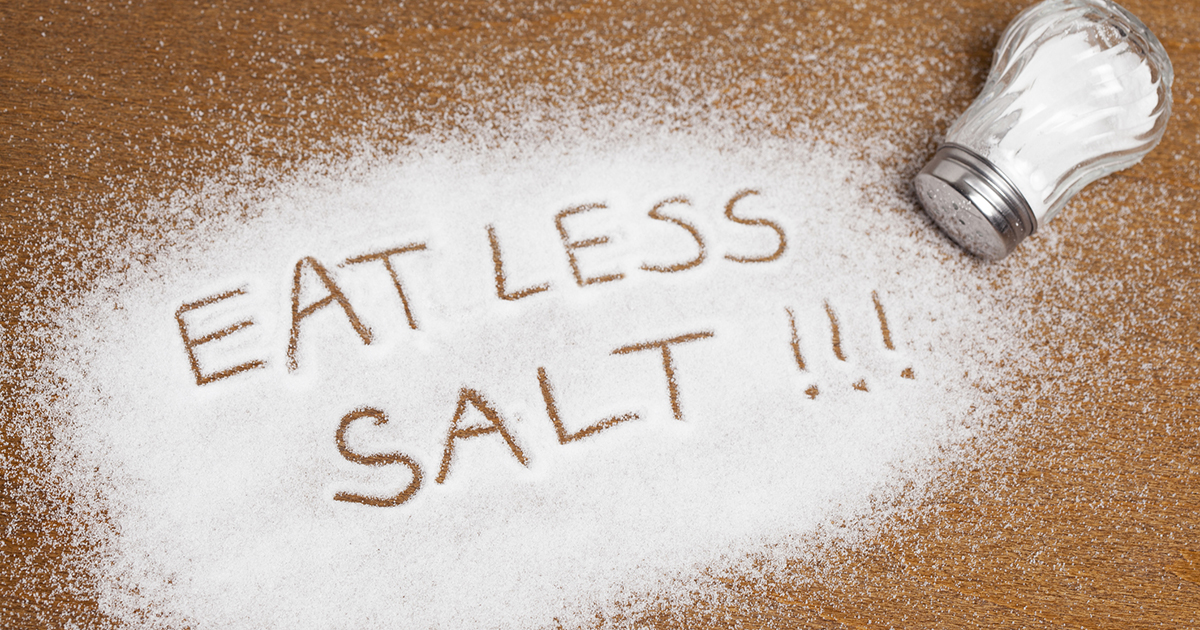Tips to Lower Your Blood Pressure
Many people can lower their blood pressure by adopting a healthy eating pattern. Eating less sodium can help you if you have high blood pressure, heart failure, kidney disease or liver disease.
The body requires a small amount of sodium in the diet to control blood pressure and blood volume. However, most people consume many times the amount of sodium needed. Too much sodium can cause your body to hold onto extra water. This extra water will raise your blood pressure and can cause damage to your heart, kidneys or liver as they are forced to work harder. Even if you take medication for blood pressure or a water pill (diuretic) to remove fluid, it is still important to have less salt in your diet.
What should my daily sodium intake be?
The American Heart Association recommends no more than 2,300 milligrams (mg) per day and moving toward an ideal limit of no more than 1,500 mg per day for most adults.
On average, American adults eat more than 3,400 milligrams of sodium daily, more than double the American Heart Association’s recommended limit of 1,500 milligrams.
Keep in mind that 2,300mg is equivalent to 1 teaspoon.
2,300mg = 1 tsp
3,400mg = 1.5 tsp
Because we consume so much sodium even cutting back by 1,000 milligrams a day can significantly improve blood pressure and heart health.
Where does the sodium we eat come from?
65 percent comes from food bought in supermarkets and convenient stores
25 percent comes from restaurants
10 percent comes from home cooking and other sources
How do I cut down on sodium?
Here are a few tips to consider.
Although sodium is important for your body to function, too much can be harmful for people with high blood pressure. Limiting salt in your diet is key. Salt is an acquired taste and taste buds can be retrained in less than two weeks if people stick with the lower-sodium diet.
Information provided by Catherine Ngono, RD.
Resources
Make smart choices when dining out.
- When dining out, let your server know that you want your food to be cooked without salt.
- Ask for sauces and dressings to be put on the side.
- Many restaurants provide nutrition facts on their menus or websites. If you cannot find that information, ask your server.
Eat more fresh foods.
- Fresh fruits and vegetables are low in sodium, as well as frozen vegetables and fruits that have no added juices or sauces.
- Fresh meats are lower in sodium than processed meats, such as bacon, sausage and hotdogs.
Eat less salt at the table and when cooking.
- Leave the salt out of recipes for pasta, casseroles and soups.
- Do not add salt to food while cooking or before eating. Teach family members to taste food before adding salt.
Be a smart shopper.
- Look for food packages that say “salt-free” or “sodium-free.” These items contain less than 5 milligrams of sodium per serving.
- “Very low-sodium” products contain less than 35 milligrams of sodium per serving.
- “Low-sodium” products contain less than 140 milligrams of sodium per serving.
- Beware of “reduced salt” or “reduced sodium” products. These items may still be high in sodium. Check the nutrition label.
Add flavors to your food without adding sodium.
- Try lemon juice, lime juice or vinegar. Herbs and spices that are salt-free are widely available and can be used to flavor foods.
https://www.heart.org/en/healthy-living/healthy-eating/eat-smart/sodium
https://www.uptodate.com/contents/low-sodium-diet-beyond-the-basics





